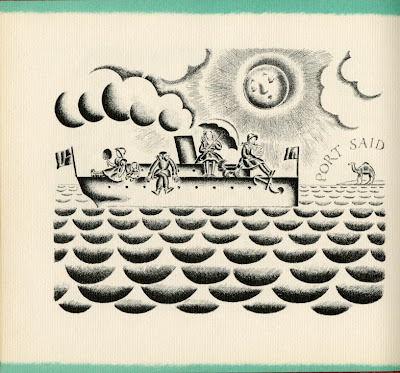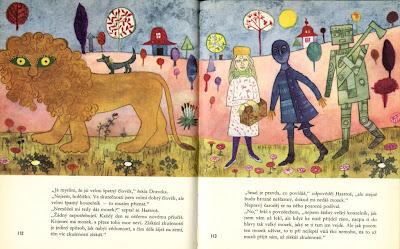by Helen Sewell, 1931
It's why they call them PICTURE books. The highest honor a children's book can receive is the Caldecott Award. It is given for the pictures. As stated under Caldecott Criteria, "The committee make[s] its decision primarily on the illustration..."
Helen Sewell, original illustrator of Little House on the Prairie, did not win the Caldecott Award for A Head for Happy. The best book of any given year usually doesn't. Also the Caldecott wasn't created until 1937. Still it wouldn't have won anyway.
A Head for Happy tells the tale of a girl named Letty and her quest to find a head for her doll, Happy. She travels the world on a surreal, picaresque journey from New York to, with a few detours, the island of Guam, where a cocoanut makes for the perfect head. This book was published in 1931. Presumably cocoanuts in New York were scarce due to the Great Depression. Here are some sample pages. . .
WHY WE LIKE THIS BOOK: the lead character has no head.
SEE ALSO: The Headless Horseman from The Legend of Sleepy Hollow by Washington Irving. Jack Pumpkinhead from The Marvelous Land of Oz by L. Frank Baum.


















































